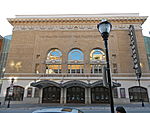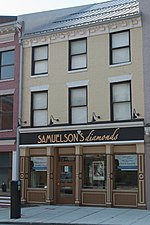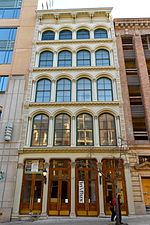Eutaw House
Demolished buildings and structures in BaltimoreHotels disestablished in 1912Hotels established in 1835Hotels in Baltimore

Eutaw House was a notable 19th-century hotel of Baltimore, Maryland, in the United States. Constructed beginning in 1832, officially opened in 1835, Eutaw House was located at the northwest corner of Baltimore and Eutaw Streets.
Excerpt from the Wikipedia article Eutaw House (License: CC BY-SA 3.0, Authors, Images).Eutaw House
North Paca Street, Baltimore Downtown
Geographical coordinates (GPS) Address Nearby Places Show on map
Geographical coordinates (GPS)
| Latitude | Longitude |
|---|---|
| N 39.2896 ° | E -76.6213 ° |
Address
The Hippodrome Theatre at the France-Merrick Performing Arts Center
North Paca Street 5
21201 Baltimore, Downtown
Maryland, United States
Open on Google Maps








